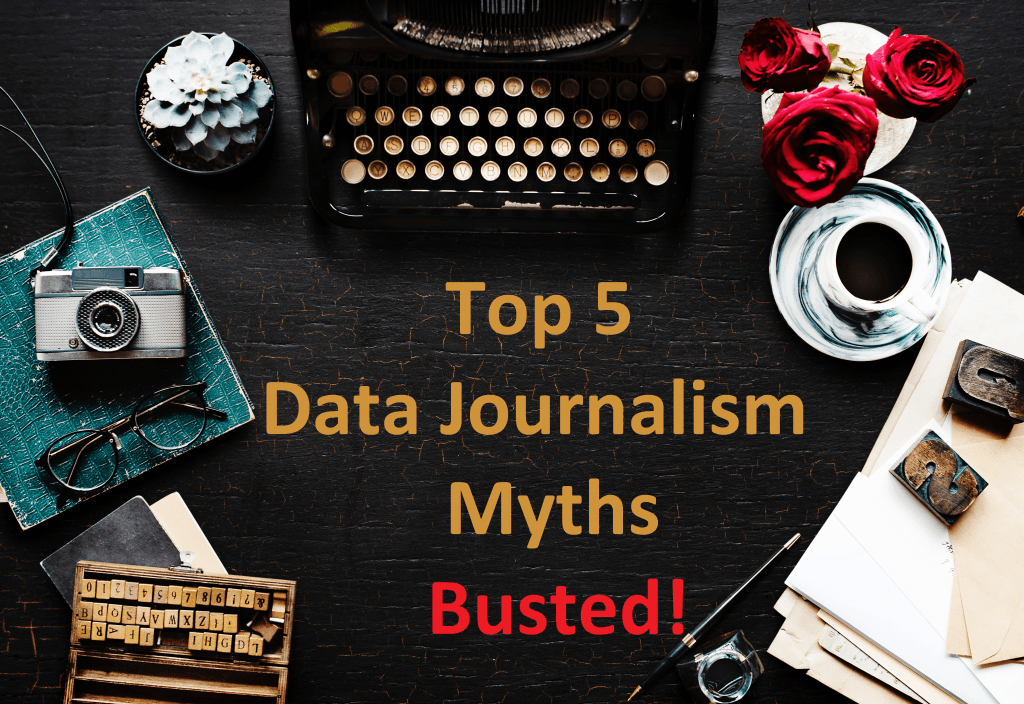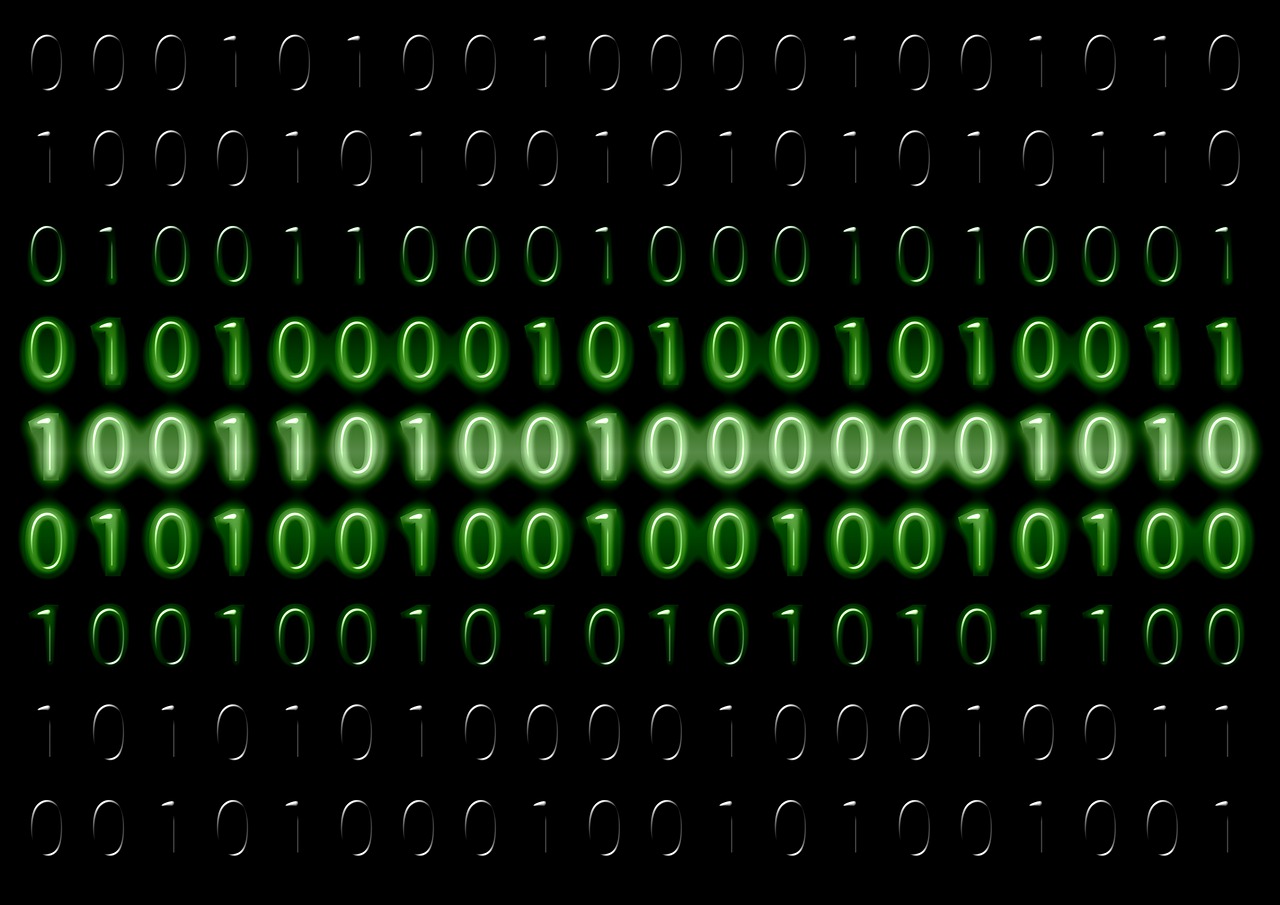
A good journalist is a master storyteller. Telling compelling stories with data has become a new challenge and a growing trend in journalism today. The Internet has unlocked the world of information and made a huge amount of data available. Data journalists dig through all that data and transform it into valuable content.
There is a continuous and growing demand for data journalists, but many traditional journalists still shy away from it. Data journalism is kind of shrouded in mystery due to many myths about who can be a data journalist and which skills are required. We’ll delve into the most common myths about data journalism and unfold reality to help you better understand it and be less intimidated.
Myth #1: Data journalists must have a knack for math
“I am in journalism because I don’t have a knack for math” is the first thing most journalists and journalism students will say about data journalism. However, just because data-driven journalism involves numbers, it is not all about numbers. And it certainly is not required that you be a math wizard to create stories with data.
As a matter of fact, not all data-driven stories have to rely on numbers. They can actually be based on something a lot more palatable, like wine, for example. If you don’t believe it, check out this interactive timeline that shows us how wine colonized the world.
More importantly, even when you need to work with numbers, data journalism does not imply that you have to be an expert mathematician to get the job done. There are fantastic tools that will help you crack down the numbers and uncover the story in them. For example, a spreadsheet program like Microsoft Excel that can perform all sorts of calculations for you. You will need to learn to use basic formulas, which shouldn’t be a problem as there are so many (free) resources and tutorials out there.
Fact #1: You don’t need to be a math genius to get started with data journalism. All you need to do is to supplement your natural born curiosity as a reporter and storyteller with some skills that don’t require a mathematician’s mind or background.
Myth #2: Data analysis and reporting is for analysts and data scientists
As already mentioned, some of the best known tools for making sense of data are Microsoft Excel and similar data manipulation and cleaning tools. It is well-known that these are mostly used by data analysts, data scientists and other specialists who are trained to work with data and report about it.
But data is everywhere around us, it is widely accessible to everyone. Besides, who can spot a good story or groundbreaking trends better than curious reporters? After all, that isn’t something data analysts are known for or something they should know how to do.
Fact #2: Although analytical skills are required in data journalism, it doesn’t mean that telling stories with data is best left to data analysts and data scientists alone.
Myth #3: You can’t be a data journalist without programming skills
The idea that coding skills are essential for any data journalism is the scariest of all to most seasoned or prospective journalists. If coding was your thing, chances are you wouldn’t have chosen journalism for your major. Right?
Well, even though there are skilled programmers among renowned data journalists, the naked truth is that this skill is not a deal breaker that should keep you from taking up data journalism. Note that anyone can be a data journalist: a writer, an economic reporter or politics journalist. There are tons of easy-to-use tools that will help you make sense of your data, analyze it and then create compelling visualisations without knowing how to write a single line of code. Some popular options include: Tableau, Microsoft Excel or Google Sheets, OpenRefine, Infogr.am, Timeline JS, Google Charts and Piktochart, Visual.ly, etc.
Fact #3: Yes, programmers can make great data journalists. But, note that you can be a data journalist without programming skills. Coding is not a basic requirement or qualification for the job.
Myth #4: Data journalists must know everything
The above three points already make it seem like a data journalist must be an extraordinary superhuman who knows (at least) how to sniff out a great story, do math like Pythagoras, Isaac Newton and René Descartes together, write computer code with closed eyes and analyze data like a trained professional. And that’s not all.
Let’s not forget UX design and fantastic research skills. Yes, it would be absolutely awesome to have all these skills and more, but in reality, few people really do. No one in their right mind can expect one person to have all these skills. The reality is that newsrooms with data journalism teams usually hire professionals with different sets of skills. Data journalism today is a team sport and successful teams comprise different specialists as you can read here.
Fact #4: No, you don’t have to have a Swiss army knife of data journalist skills under your belt and know everything. Furthermore, even if you are on your own and don’t have all the desirable skills, but want to get a foothold in this field, there are widely available resources to get you from a data-driven idea to a visually appealing, valuable piece of content that will qualify as data journalism.
Myth #5: Data journalism requires lots of time and resources
Finding data, organizing and understanding it to find the angle and story in it, and then finally visualizing it in the most appropriate format obviously requires time. Learning how to use different tools and developing “new” skills like using visualizations to tell a story may also seem time-intensive and expensive. Purchasing software that will get the job of presenting data visually may seem just like one more attack on your budget. On top of that, building a team with different skills mentioned above that can successfully implement the data journalism in the newsroom, may also require significant resources. All in all, it looks like data journalism is very time and resource intensive branch of journalism with high entry barriers.
The truth is that there are many data sources online that are available to everyone that will help you quickly and easily unearth relevant and story-worthy data. Also, most tools of the trade don’t have too steep a learning curve and many of them are affordable, if not free to access. Tools can help you visualize your data in a compelling way. More importantly, data journalism, if done right, by someone who knows how to sniff out a good story, can easily reach a wider audience, attract a larger readership, and generate more writing gigs and opportunities.
Fact #5: Even though it may look like data journalism is time and resource intensive, in reality it doesn’t necessarily require more time or money than the traditional quality reportage. Practice and experience make it easier and faster. And quality data journalism opens the world of opportunity for the journalist and the publication alike.
There you have the five common myths about data journalism and facts behind them. Data journalism is not so new, in fact, newsrooms have always relied on data to support their stories. However, thanks to the advent of the Internet and explosion of data online (including “big data”), it’s on the rise.
It is a good time to jump on the data journalism bandwagon. Don’t let misconceptions about it stop you from trying yourself in it! If you come across some other information about data journalism that seems true, but are not sure, share it with us in the comments and we’ll try to bust it!




